The spirit of Emily Dickinson, other powerful ingrediences of „Manafon Variations“, and more – ein Interview mit Jan Bang und Erik Honoré
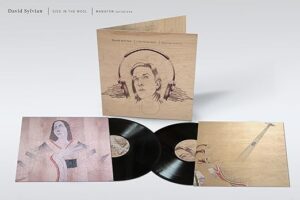
Michael: You and Jan were only in parts involved in the making of „Manafon Variations“, but your impact on some tracks was very strong. How do you see the place of this album in David Sylvian‘s work?
Erik Honoré: Looking back on Died in the Wool – Manafon Variations, I see it as an extension and deepening of the world Manafon created – a work that retains the starkness and unpredictability of the original, but introduces new layers of texture, arrangement, and atmosphere. While Manafon was characterized by its raw, almost documentary-like approach to improvisation, Died in the Wool reshapes and recontextualizes those elements, offering a more sculpted and immersive listening experience. The album highlights David’s ongoing willingness to revisit and reinterpret his work, allowing new voices and techniques to subtly shift its meaning.
Michael: As I remember, you and Erik found a deep source of inspiration in David Sylvian‘s solo albums from start on. Do you still return to them every once in a while, or is it so much in your visceral memory that it is more a living presence in your unconscious? And do you have a favourite album? Mine was always „Brilliant Trees“…
Jan Bang: After a performance at Cafe OTO last summer, Nina, my wife and I had a coffee in London with Yuka Fujii, David’s long time creative partner. She mentioned her favorite track, the title track from Brilliant Trees. It builds heavily on Jon Hassell’s work around that time of Possible Musics , Dream Theory in Malaya and Aka Darbari Java. David told me about the recording process and meeting Jon who was 15-20 years his senior. Having the vision of how the combination of the organ chords and Jon’s trumpet would be intertwined. I guess vision combined with a great deal of stubbornness is needed to come out on the other end of a recording session with something interesting. I love that track and the unusual combinations. David has a unique way of finding the right people at the right time. Then make something out of it.
Erik: Brilliant Trees was important to me when it came, as a transition from pop and surface to something more profound, but his third solo album Secrets of the Beehive has always been a particular favourite. I feel it represents the essence of all of David’s approaches and influences up until that point, in a distilled form. Natural, seamless and free, both musically, lyrically, and sonically. There’s a clarity to it, a kind of effortless depth, that makes it feel timeless. I do return to his early solo albums from time to time, but in many ways, they’ve become more of a „living presence in my unconscious“, as you say. Their atmosphere, their emotional and sonic landscapes, are so deeply ingrained that they don’t need to be consciously revisited—they just exist as a reference point, a shared language, a sensibility that still can be drawn upon in new ways.
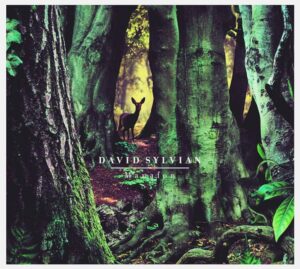
Michael: There was a change of direction in David’s work with „songs“ that started with „Blemish“ and its remix album. Free improvisation, so-called „free jazz“ and other aounds beyond the mainstream entered his work up to „Manafon“ and „Manafon Variations“. For many listeners this was a watershed, like the one of Talk Talk when they made „Spirit Of Eden“ and „Laughing Stock“. On „Manafon“ David inspired a group of improvisors to build the foundation of the album with a series of free improvs. Afterwards he sang over carefully assembled parts of it. On „Manafon Variations“ the process was the other way round. His singing already existed and was to a great extent the starting point for finding new surroundings for the voice. Was this quite a creative challenge?
Erik: I wouldn’t describe it as a challenge so much as an inspiration, a „roadmap“ – something that provided direction rather than resistance. It was a cross between producing and creating that felt both familiar and inspiring, something that we had already explored in other collaborations with David, where I was more strongly involved than on on Manafon Variations. The process was very much about finding new landscapes for his voice, building something around his existing vocal performances.
That approach—creating a sonic world in response to his voice—was something we also did on Do You Know Me Now, where we constructed the arrangement around his guitar/vocal demo, and on Uncommon Deities, which had a spoken-word foundation. You are of course right: David’s shift toward free improvisation and more abstract forms of music, starting with Blemish, was certainly a turning point, as significant as Talk Talk’s transition from The Colour of Spring to Spirit of Eden—a leap into something raw, instinctive, and far removed from traditional song structures.
But while Manafon built its foundation from collective improvisation, Manafon Variations flipped that approach: His voice was already there, and the task was to build an environment around it. That process wasn’t about overcoming obstacles; it was about discovery, about allowing the music to emerge in response to something that was already present.
Michael: Let‘s come to two pieces you were involved in. One example: „A certain slant of light“. How did you approach the piece? At the last passage, there was this beautiful instrumental coda with Arve‘s trumpet.
Jan: This part was created using existing samples of Arve, performed on my sampler in the Punkt Studio. I’ve long since moved the studio location, but thinking of this piece I can clearly visualize the recording space. Performing these trumpet samples, turning them around, the sampler is a shapeshifter. Something that could not necessarily have been done by recording Arve Henriksen´s trumpet directly. Different techniques create different results.
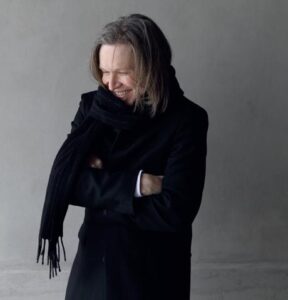
Michael: Then there was this piece „I Should Not Dare“. The words by Emily Dickinson. In my review at the time i wrote, i could imagine this being a 20 minute track, it is so relaxed and condensed at the same time, rich in details and poetic impacts, „an index of pissibilites“ so to speak… Can you say something about the way this little thing grew to its kind of perfection…. And a memory of working on it (with the ghost of Emily Dickinson around…)?
Jan: We struck gold with that specific piece. Christian Fennesz had done a guitar overdub on David’s basic vocal/acoustic guitar recording and sent it to me. I added the surroundings: the sudden bass note, the synth sample I had from a concert with Ståle Storløkken, the strings etc that changed the harmonic structure in certain selected parts. It is very open in terms of „sound population» for the lack of a better word. It breathes.
Michael: Now „Manafon Variations“ received their first ever vinyl edition, as a double album. I think, what once was confusing the listeners‘ expectations (who wanted to listen more classic songs) today seems much more accessible, easier on the ear even for new listeners. It may be the last album of David, the singer, but it is surely not coming from the ivory tower. Do you agree?
Erik: I do agree. When Manafon and later Died in the Wool – Manafon Variations were first released, they challenged many listeners’ expectations. But over time, I think these albums have settled into a different place in his catalog, where their accessibility is no longer measured by traditional structures, but by the immersive quality of their soundworlds. Perhaps that’s a reflection of how our ears and expectations have changed, or maybe it’s just the natural way music finds its audience over time.
If this does turn out to be the last album of „David, the singer,“ it’s certainly not a work from an ivory tower. There’s too much humanity in it, too much presence and engagement with sound, with words, with the musicians he surrounded himself with. For me, the experience of collaborating with David Sylvian on various projects was never about making something remote or impenetrable—it was about responding to something deeply personal and expressive. And I think that’s why the music still resonates. It asks something of the listener, but it also rewards in ways that continue to unfold long after the first encounter.
Michael: Looking back, how was that teamwork with David going on in regards to the two pieces I asked you about? Fighting? Easy going?
Jan: Really easy going and given total freedom from David’s side to express ourselves. However, on a personal level I am most happy about the Emily Dickinson piece which is only based on small samples that form a mosaic of colors.
Erik: The collaboration with David on Died in the Wool, and for me personally even more on Uncommon Deities, flowed very naturally. One of the things that made working with him so rewarding was the balance he struck between creative freedom and extremely precise feedback. He has this ability to provide razor-sharp, informed guidance—never imposing, but always illuminating. His comments are never vague; they are direct, insightful, and always about serving the essence of the music. That combination of trust and precision made the processes not just easy-going, but deeply inspiring. His approach isn’t about control, a „top-down“ approach, but about bringing clarity to the work—helping to shape and refine ideas without limiting their potential. That’s why these long-distance collaborations never felt like a struggle or a negotiation; they felt organic, like a conversation where each exchange moved the music forward in a meaningful way.
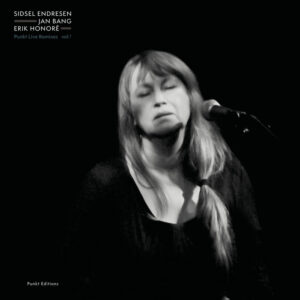
Michael: A last question. It is very impressive how David Sylvian explores the range between speaking and singing. I think, this adds to the magic very much. At one point, maybe on the last piece, he is even singing straight away, like in a song from the older days, but only two verses as a counterpoint…. On other tracks there is a very thin line between spoken word and singing….
Erik: David’s ability to explore the space between speaking and singing is one of the compelling aspects of his artistry. It’s a space where emotion is distilled, where meaning is heightened, and where the listener is drawn in by the sheer intimacy of his delivery. On Died in the Wool, there are moments where his voice almost slips into what we might call a “classic song” structure, only to pull back, reminding us of the deliberate tension he plays with. This ability to move fluidly between expressions adds to the magic, creating a sense of expectation and, at times, an almost ghostly presence. That same sensibility is something Jan and I have also encountered in our collaborations with Sidsel Endresen. We are so privileged. Sidsel, like David, has an unparalleled instinct for phrasing, tone, and texture—she can make a single, wordless syllable feel monumental. Both of them push the boundaries of what a voice can be, making every moment feel necessary.
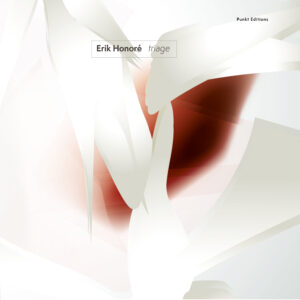
Postscriptum: PARTS OF THIS INTERVIEW WILL FIND THEIR WAYS INTO KLANGHORIZONTE (DEUTSCHLANDFUNK) MARCH 27, 9.05 p.m. / That radio hour can be heard a week long after airplay at Deutschlandfunkfunk, and, at another place, forever and a day (but only, If the „5 hour production“ on March 26 will live up to my expectarions). Many thanks to Erik and Jan for entering memory lane and offering so much insights! Apart from this day within our blog diary, this conversation will be part of our monthly revelations in April. With a slightly changed sequence of photos and covers.
By the way, the last albums by or with Jan Bang and Erik Honoré can be found on Bandcamp and PUNKT EDITIONS incl. Erik‘s „Triage“, Jan‘s „Reading The Ear“, his duo album with Eivind Aarset titled „Last Two Inches of Sky“ (HERE an old radio hour with the two!) Sidsel Endresen‘s „Punkt Live Remixes, Vol. 2“ (LISTEN NOW!) or „The Bow Make“, a collaboration of Jan Bang and Daj Fujikura, the Japanese composer strongly involved in „Manafon Variations“. And HERE an old hour of Klanghorizonte with Erik‘s Triage album!
2 Kommentare
Olaf Westfeld
Insightful interview. Have listened to „i should not dare“ right after reading it, just now. Gold sounds indeed.
Jan Bang
Dear Olaf,
Glad to hear you like it. Sometimes these pieces just seem to come together in a natural and organic way., as with this one in particular. The same goes for the other pieces on that album that Erik and I worked on together. We´ve been working this way since the turn of the century with a variety of productions. The Manafon variations is a good example of how long distance collaborations can produce good results that involves creative freedom while not being physically together in the same room.